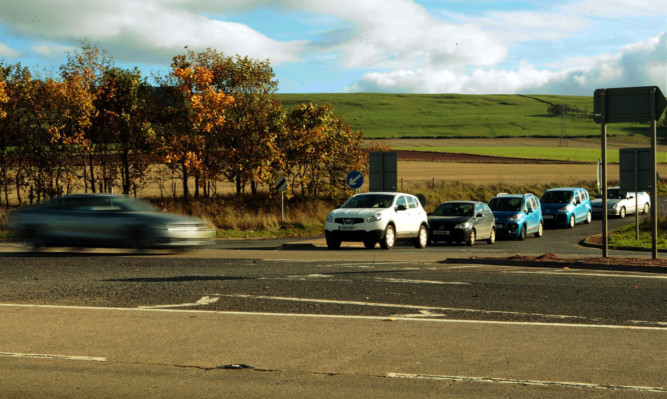An eight-mile stretch of road linking Angus and the Mearns has been “named and shamed” as the third most dangerous in the UK.
The A937 between Montrose and Drumlithie taking in the controversial Laurencekirk south junction with the A90 is highlighted in a report by the Road Safety Foundation (RSF) today.
Campaigners for safety upgrades at Laurencekirk have said they are worried about the likelihood of fatal accidents on a road that is “gaining notoriety” across the country.
The road only comes behind a coastal route in the south of England, on which serious crashes have increased 16%, and a 10-mile stretch of the A809 in Glasgow.
Campaigner Jill Fotheringham, who has spent 10 years calling for safer grade separation of the A90/A937 junction, said the latest news has angered her.
“I think our transport minister, Transport Scotland, BEAR, the council they should all be hanging their heads in shame,” she said. “To be honest I don’t think even becoming number one in next year’s report would make much difference.
“The only thing that would make Transport Scotland sit up and take notice is if we have more fatalities.
“But I don’t believe it would even take one, it would be more. People will have to lose their lives for them to move.”
Campaigners previously called for the Scottish Government to invest some of the £50 million savings made on the Forth Replacement Crossing into a new junction.
During the week, as many as 20 cars queue to merge with the A90 on the Marykirk side, where driver frustration is commonly cited as the root of accidents.
Councillor David May said perceived inaction to resolve this “beggars belief”.
“I strongly feel the Government are letting the north-east down, and the Angus and Mearns area down,” he said. “It should be a priority for them over so much else.”
Nigel Don MSP has asked Nestrans, Aberdeenshire Council and Angus Council to meet after submissions by Transport Scotland.
These intimated the agency would insist on road improvements being made before any substantial development.
The RSF report shows local councils scheduling low-cost safety improvements alongside routine maintenance has helped reduce fatal and serious crashes by 80% on 15 stretches of roads. These reductions were worth £400m to the economy.
The report shows:
* Running off the road accounts for a quarter of all deaths.
* Risk to road users is seven times greater on single-carriageway A roads than motorways.
* Motorways have seen a 20% reduction in fatal and serious crashes.
* Junction crashes are the most common collision leading to serious injury.
* Motorcyclists account for 1% of traffic but 21% of fatal crashes.
RSF engineering manager James Bradford said: “Authorities commonly report that many of the most effective improvements have not, surprisingly, been carried out specifically to improve road safety.
“Often the pressing need to carry out very basic maintenance has initiated action and the additional safety enhancements were a later addition. Scheduling in this way is extraordinarily cost effective 90% of routes listed contained work on resurfacing, signing and marking.”
The UK’s most dangerous stretch is on the A285 in West Sussex, where fatal and serious crashes have increased 16% over the period 2007 to 2012.
Another RSF report, entitled Making Road Safety Pay and commissioned by insurance company Ageas UK, was launched today by RSF chairman Lord Whitty.
It made seven safety recommendations to the UK Government.
